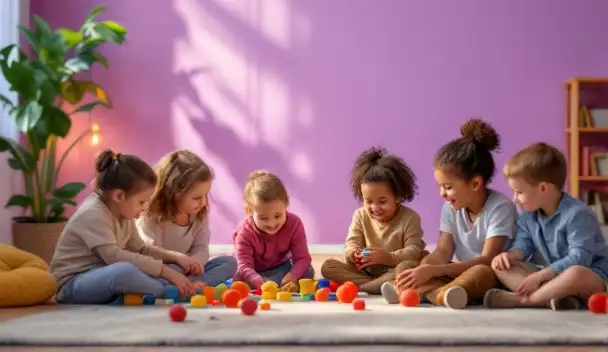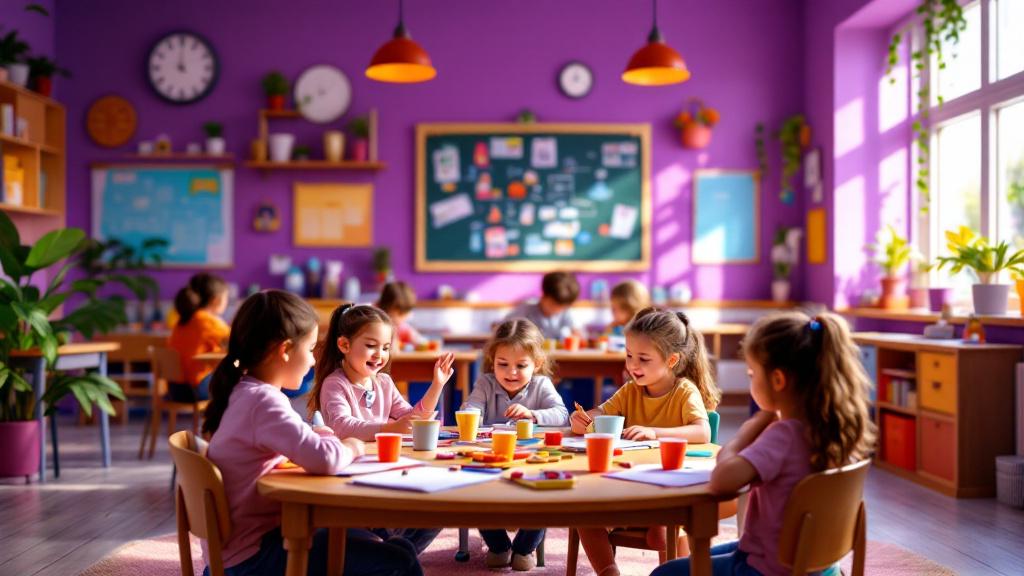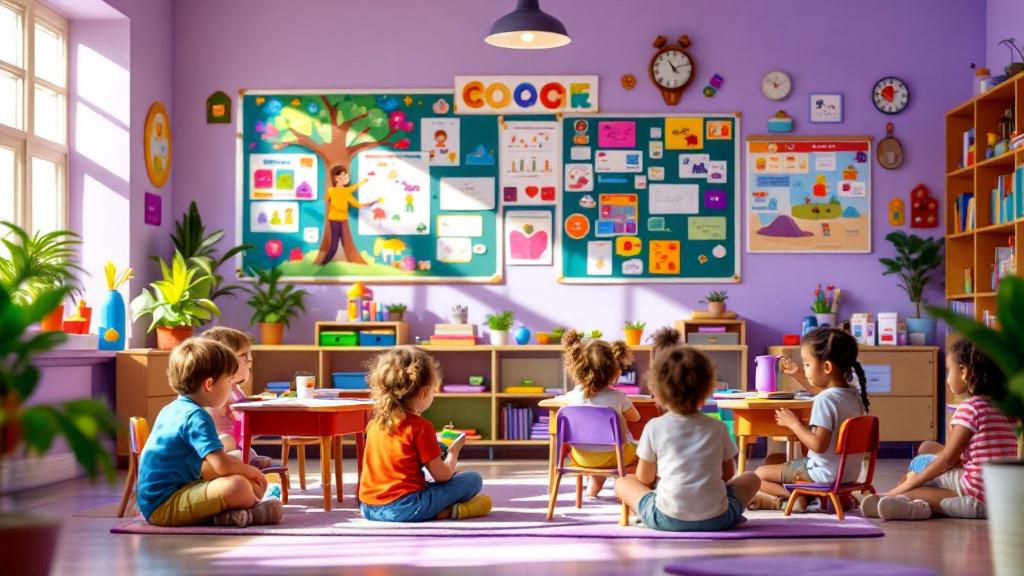Understanding the Role of ABA Therapy in Emotional Regulation
ABA therapy, rooted in behaviorist principles, offers a structured approach to help children recognize, understand, and manage their emotions effectively. Through a blend of innovative strategies, visual aids, and caregiver collaboration, ABA provides children with essential tools for emotional resilience and social success.
Core Principles and Techniques of ABA for Emotional Management
 ABA therapy focuses on understanding and modifying emotional behaviors through systematic analysis and tailored interventions. At its core, it relies on examining how environmental triggers (antecedents) and consequences influence behavior, aiming to increase positive emotional responses and reduce maladaptive reactions.
ABA therapy focuses on understanding and modifying emotional behaviors through systematic analysis and tailored interventions. At its core, it relies on examining how environmental triggers (antecedents) and consequences influence behavior, aiming to increase positive emotional responses and reduce maladaptive reactions.
One fundamental approach is positive reinforcement, which involves rewarding desired behaviors to encourage their recurrence. Therapists often use prompting techniques, such as visual cues or physical prompts, to guide children in recognizing and expressing emotions appropriately. Over time, prompts are faded to foster independence.
The assessment process includes Functional Behavior Assessment (FBA), a thorough analysis that identifies the reasons behind challenging emotional behaviors. This individualized understanding helps formulate specific strategies suited to each child's needs.
ABA employs a variety of teaching methods like Discrete Trial Teaching, which breaks instructional goals into small, manageable steps with clear responses and reinforcement. Naturalistic Teaching leverages everyday activities and natural environments to promote emotional and social skills organically. Token Economies, where children earn tokens for demonstrating appropriate emotional responses, serve as motivating reinforcement tools.
These techniques collectively enable children to learn emotional regulation skills, effectively navigate social situations, and develop resilience. Data collection and ongoing monitoring ensure that interventions are adjusted for maximum effectiveness, supporting long-term emotional well-being.
Visual Tools and Social Skills Strategies in ABA

What strategies and tools are used in ABA therapy to improve emotional regulation?
ABA therapy utilizes a broad range of methods to support emotional regulation. Visual tools like emotion cards, emotion wheels, and Mood Meters help children identify and name their feelings accurately. These visual supports make it easier for children to connect facial expressions and situational cues with specific emotions.
Coping strategies, such as deep breathing exercises, asking for a break, or engaging in calming activities, are taught through behavioral techniques like task analysis and reinforced consistently. Role-playing and modeling are also vital, where therapists demonstrate appropriate emotional responses and coping behaviors that children can imitate.
Reinforcement strategies, including positive reinforcement, encourage children to practice and repeat healthy emotional responses. Moreover, Functional Communication Training (FCT) is used to teach children alternative ways to express their needs, reducing frustration and emotional outbursts. Therapists continuously monitor progress through data collection, adjusting interventions to maximize emotional growth.
How do social stories facilitate emotional understanding?
Social stories are structured narratives designed to teach children about social and emotional cues. They describe specific social interactions and emotional responses in clear, relatable scenarios. These stories help children understand what behaviors are expected and how to respond appropriately in various contexts.
By providing concrete examples of social situations, social stories make unfamiliar or confusing experiences more accessible. This understanding reduces anxiety and fosters better emotional regulation, enabling children to navigate social environments with greater confidence.
| Tool/Strategy | Purpose | Example | Additional Details |
|---|---|---|---|
| Emotion Cards | Recognize and label emotions | Happiness, sadness, anger | Used with visual aids and reinforcement tools |
| Emotion Wheels | Identify emotion intensity | Calm, irritated, overwhelmed | Helps understand feelings at different levels |
| Mood Meters | Track emotional states over time | Happy, anxious, tired | Useful for self-monitoring and communication |
| Social Stories | Explain social/emotional contexts | Managing a new teacher, sharing toys | Aid in understanding behavioral expectations |
| Role-Playing | Practice emotional responses | Asking for help, calming down | Builds real-life social and emotional skills |
This combination of visual aids, social narratives, and interactive modeling forms a comprehensive approach to developing emotional awareness and regulation skills in children receiving ABA therapy.
Practical Strategies and Behavioral Supports
 ABA therapy employs various practical methods to help children improve their emotional regulation skills. Visual tools like picture exchange cards, emotion cards, and emotion wheels are used extensively to teach children how to recognize and label their feelings. These visual aids help children understand the connection between facial expressions and emotional states, making it easier for them to identify how they feel and respond appropriately.
ABA therapy employs various practical methods to help children improve their emotional regulation skills. Visual tools like picture exchange cards, emotion cards, and emotion wheels are used extensively to teach children how to recognize and label their feelings. These visual aids help children understand the connection between facial expressions and emotional states, making it easier for them to identify how they feel and respond appropriately.
Role-playing scenarios are another powerful technique. Through simulated social situations, children practice expressing their emotions in a safe environment. This active engagement reinforces understanding and provides a chance to apply emotional skills in real life.
Teaching calming techniques is fundamental. Strategies such as deep breathing exercises, sensory calming activities, and requesting breaks are introduced step-by-step through task analysis. These methods help children develop self-regulation, especially during moments of emotional distress.
Reinforcing positive emotional responses is crucial for sustaining progress. Therapists and caregivers are encouraged to praise calm, appropriate behaviors consistently. Such reinforcement helps children internalize healthy emotional regulation strategies and repeat them more frequently.
Overall, these approaches—visual supports, role-playing, calm-down strategies, and reinforcement—equips children with the tools needed to manage their emotions effectively, leading to reduced stress and improved social interactions.
Teaching Emotional Recognition and Coping Strategies
 ABA therapy uses visual aids, self-monitoring tools, and teachable coping mechanisms to help children understand and manage their emotions effectively.
ABA therapy uses visual aids, self-monitoring tools, and teachable coping mechanisms to help children understand and manage their emotions effectively.
Visual aids play a significant role in teaching emotional recognition. Tools like facial expression cards, emotion wheels, and mood meters help children connect facial cues with specific feelings, such as happiness, sadness, or anger. These visual resources turn abstract emotions into concrete images, making it easier for children to identify and articulate what they are experiencing.
In addition to visual tools, self-monitoring strategies are employed. Children are taught to observe their own emotional responses, often through simple charts or checklists. These tools boost awareness, allowing children to recognize when they are becoming upset or overwhelmed, which is the first step toward emotional regulation.
Teaching coping strategies involves introducing techniques such as deep breathing, requesting a break, or engaging in calming activities. These are often taught through task analysis and role-play scenarios, emphasizing practical application. For example, a child might practice taking slow, deep breaths when feeling frustrated or asking an adult for a timeout to regain composure.
Reinforcing these strategies with positive feedback encourages children to use them consistently. Combining visual aids, self-awareness practices, and coping skill training provides a comprehensive approach to improving emotional regulation in children receiving ABA therapy.
| Tools/Strategies | Description | Benefits |
|---|---|---|
| Facial Expression Cards | Pictures showing different facial cues for emotions | Helps recognize and name feelings |
| Mood Meters/Emotion Wheels | Visual scales indicating emotional intensity | Assists in understanding the level of emotions |
| Self-Monitoring Charts | Checklists to track feelings over time | Promotes awareness and self-regulation |
| Deep Breathing Exercises | Guided calming techniques | Reduces anxiety and promotes self-soothing |
| Request a Break | Teaching children to ask for a pause | Provides a healthy outlet for emotional distress |
Data collection through observing and recording responses ensures ongoing assessment of progress. Involving families and educators in this process helps generalize skills across settings. Ultimately, these evidence-based tools and strategies foster emotional resilience and improve overall social functioning for children with ASD.
Reinforcement and Skill Generalization
ABA therapy employs positive reinforcement strategies to encourage children to use appropriate emotional responses. When children demonstrate calm behaviors or successfully manage their feelings, therapists often reward these actions with praise, tokens, or other incentives. This reinforcement strengthens the likelihood of continued emotion regulation, helping children understand which responses are desirable.
Maintaining emotional regulation skills involves ongoing caregiver training and naturalistic teaching approaches. Caregivers, teachers, and therapists work collaboratively to embed strategies into everyday routines. Caregiver coaching sessions provide families with the tools to reinforce skills at home, creating consistency across settings.
Skill generalization is crucial for lasting change. ABA promotes this by practicing emotional regulation techniques in diverse environments—home, school, or community—so children can transfer skills beyond therapy sessions. Using real-life scenarios, modeling, role-playing, and visual aids help children adapt their responses across different contexts.
Overall, ABA’s structured yet adaptable methods foster continuous development and reinforce the application of emotional regulation skills across various settings, supporting children’s independence and resilience.
Monitoring Progress and Ethical Considerations
 In ABA therapy aimed at improving emotional regulation, therapists rely on systematic data collection methods to monitor a child's progress. Techniques such as frequency counts—tracking how often a child uses coping strategies—and duration measures, which assess how long calm behaviors are maintained, provide concrete information about the child's development.
In ABA therapy aimed at improving emotional regulation, therapists rely on systematic data collection methods to monitor a child's progress. Techniques such as frequency counts—tracking how often a child uses coping strategies—and duration measures, which assess how long calm behaviors are maintained, provide concrete information about the child's development.
Therapists often use observation logs and real-time data to keep track of emotional responses, enabling them to identify patterns and evaluate the effectiveness of specific interventions. This data-driven approach allows for adjustments to be made promptly, ensuring that goals are tailored to each child's unique needs and promoting continuous improvement.
Maintaining ethical standards is fundamental in ABA therapy. Emphasis is placed on individualization, ensuring that interventions are customized to respect each child's personality, culture, and environmental context. Therapists avoid punitive measures, instead focusing on positive reinforcement to encourage appropriate emotional responses.
Cultural sensitivity plays a significant role, with practitioners engaging families in treatment planning to align strategies with cultural values and preferences. By involving caregivers, ABA therapists foster an environment of collaboration, support, and respect.
Overall, ethical ABA practices prioritize dignity, empowerment, and tailored support, creating a safe space where children can develop emotional regulation skills effectively and respectfully.
Fostering Emotional Growth for a Brighter Future
ABA therapy’s structured, evidence-based strategies significantly aid children in understanding and managing their emotions. Through visual tools, social stories, modeling, reinforcement, and caregiver collaboration, children develop vital skills for emotional regulation, resilience, and social integration. As a result, they are better equipped to navigate life’s challenges with confidence, independence, and a greater sense of well-being.
References
- Teaching Emotional Intelligence with ABA - Therapyland
- Teaching Emotional Regulation with ABA Tools
- From Meltdowns to Calm:ABA Therapy Strategies for Managing ...
- Autism & Emotional Support | Parent Toolbox - Sunshine Advantage
- Applied Behavior Analysis (ABA) | Autism Speaks
- How to Use ABA in the Classroom
- 10 Effective ABA Behavior Management Strategies - Ori Learning
- Applied Behaviour Analysis (ABA) and autistic children
- Girls Don't Cry Tote Bag - How to ABA





































































































